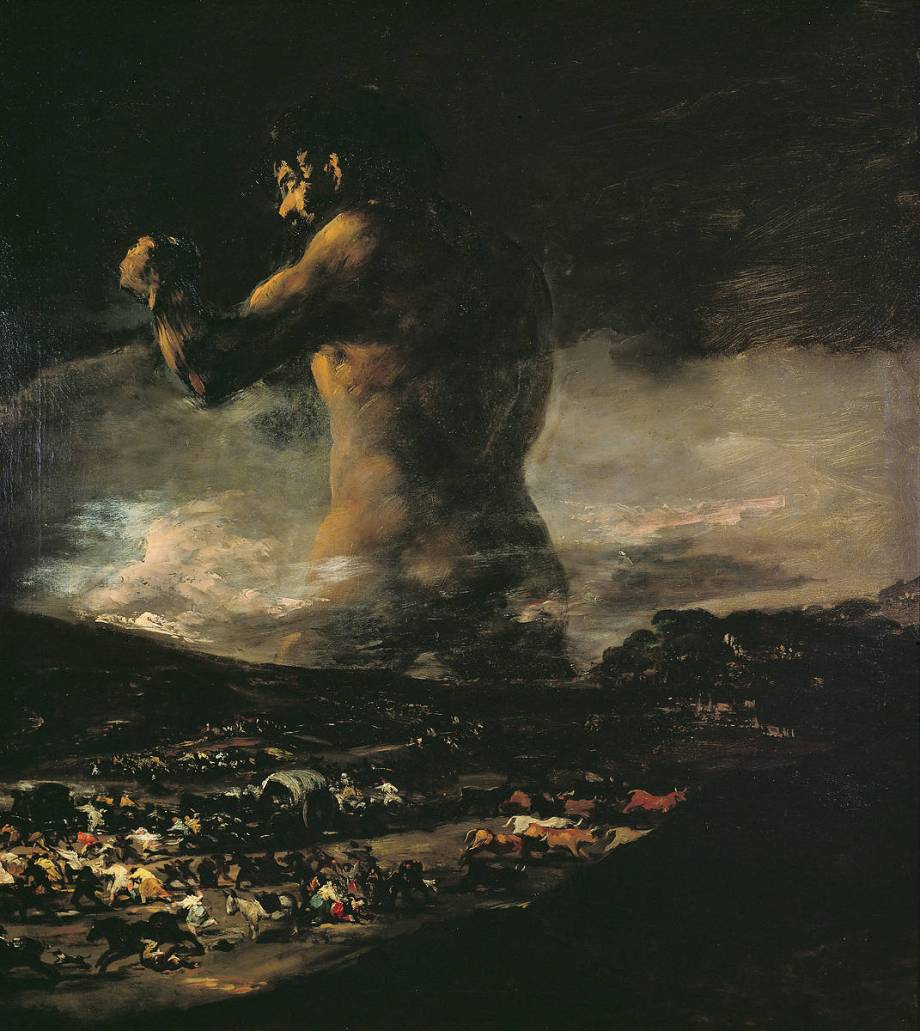Shop art print and framed art The Colossus by Francisco de Goya
Subjects : Fantasy
Keywords : Painting, black art, giant
(Ref : 137552) © Prado, Madrid, Spain / Bridgeman Images
Customise
Your art print
The Colossus OF Francisco de Goya
The artwork
The Colossus
The Colossus is a painting attributed to Francisco de Goya and produced after 1808. The authorship of this oil on canvas, which is kept in the Prado Museum in Madrid, has been the subject of lengthy debate.
In The Colossus, a giant walks behind the mountains in a clearly romantic allegory, while the crowd flees in disorder into the valley. There are a multitude of interpretations.
Nigel Glendinning claims that The Colossus is based on Juan Bautista Arriaza's patriotic poem Profecía del Pirineo, which was widely read by Spanish resistance fighters. Verses 25 to 36 feature a Titan rising from the Pyrenees, a mountain range whose etymology means "burnt mountain" and has been reflected in the Spanish literary tradition, as can be seen in Luis de Góngora's Fábula de Polifemo y Galatea. Arriaza calls the giant Polyphemus "This Pyrenees" in verse 62. The poem describes details such as the clouds around his waist, a detail that the painter transcribed into the painting:
The Spanish people are depicted as giants rising from the Pyrenees to oppose Napoleon's invasion, a classic theme in the patriotic poetry of the War of Independence.
His willingness to fight unarmed, with his bare hands, as Arriaza himself expresses in his poem Recuerdos del Dos de Mayo ("Memories of the Second of May"):
He emphasises the popular character of the resistance, in contrast to the terror of the rest of the population, who flee in all directions, generating an organic composition typical of Romanticism, [...]
This artwork is a painting from the classical period. It belongs to the romanticism style.
« The Colossus » is kept at Prado, Madrid, Spain.
Find the full description of The Colossus by Francisco de Goya on Wikipedia.



































